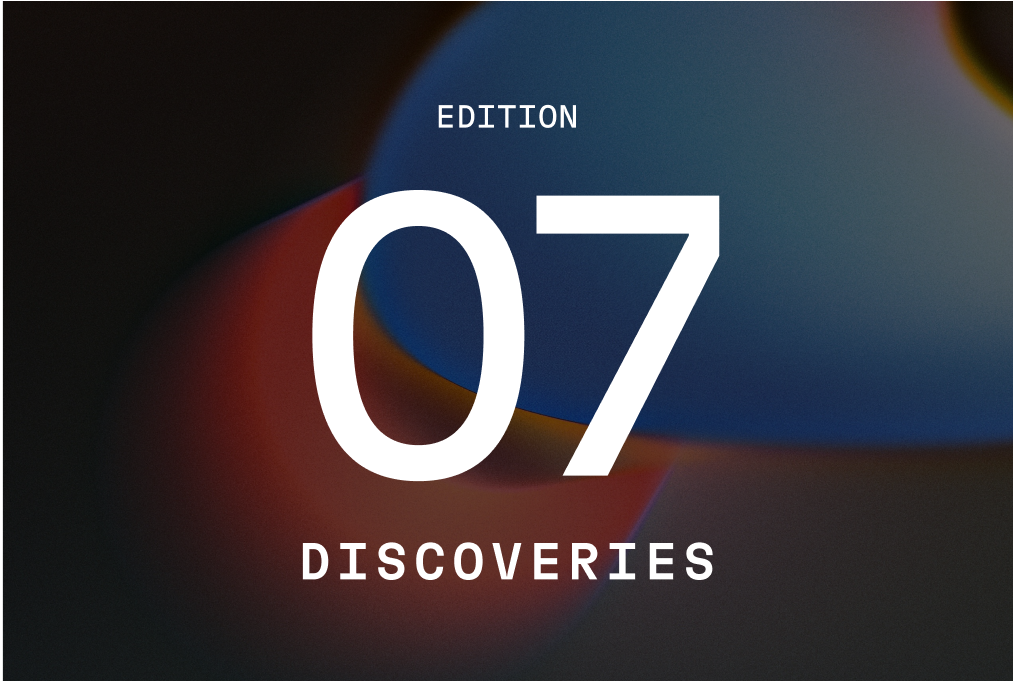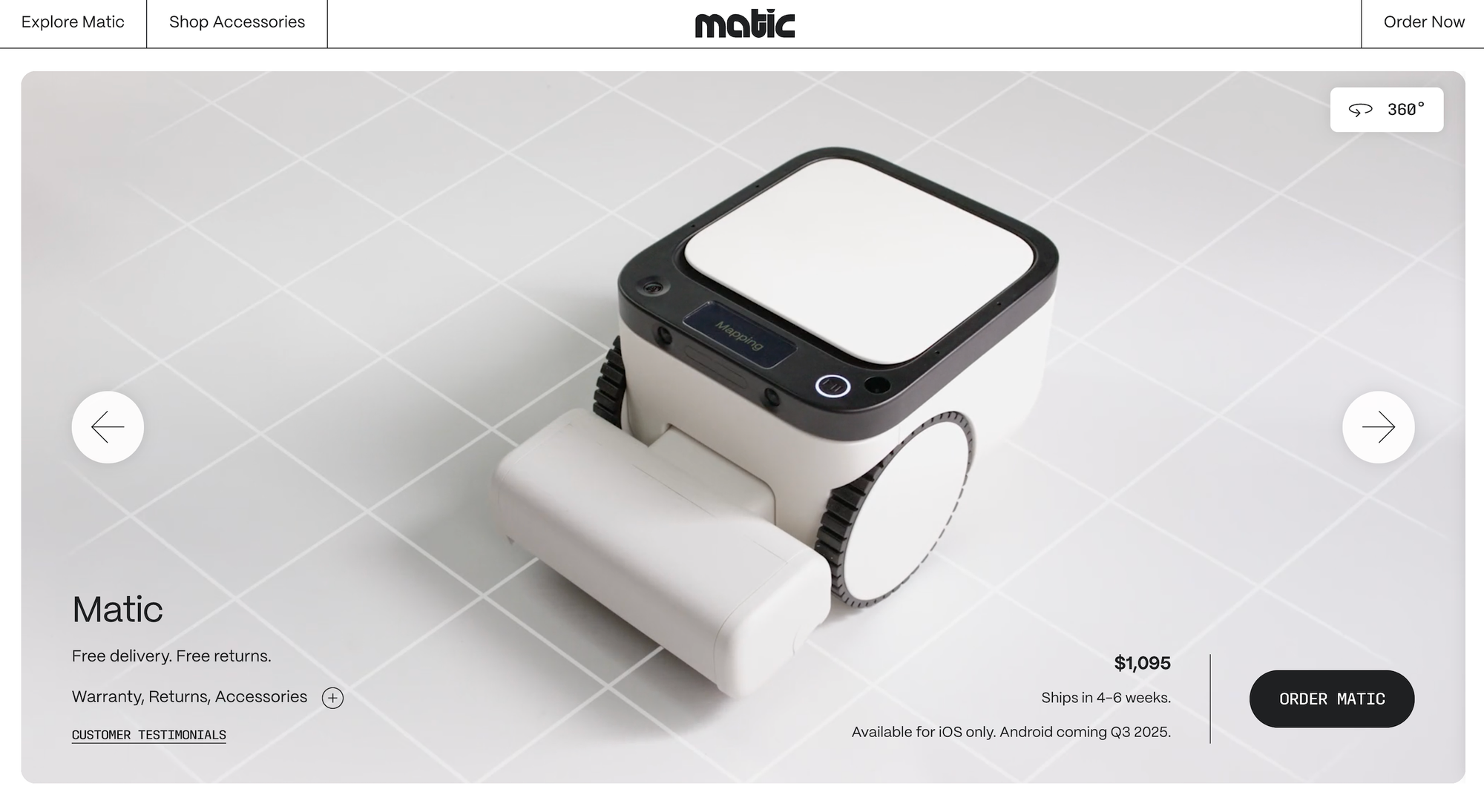Discoveries #7 | Part 2: Advice to My 22-Year-Old Self

Welcome to Edition 07 of Discoveries. Each week, I share inspiration on design, product building, and what's next.
Part 2: Advice to My 22-Year-Old Self
Picking up where we left off—here’s the rest of the advice I’d beam back to 22-year-old me, in between the energy drinks and questionable haircut choices.
If you didn't catch Part 1, definitely start there first!
Great designers (and builders) crank out tons of work.
Look at any legendary designer—Rams, Dyson, Vignelli, Hadid—and you’ll notice two things:
- Their work is ridiculously good.
- There’s a lot of it.
High quality comes from high quantity. You need bad ideas to get to the good ones. You need failed sketches, cringey wireframes, typo-ridden copy drafts. Volume isn’t the enemy—it’s the process.
This applies to more than design: writing, coding, selling, dating. (Okay, maybe not dating.) But the point stands: quality is built on quantity.
Don’t be precious with your work. Just keep making stuff.
Take responsibility for everything. Even the stuff that’s not “your fault.”
This one is hard but powerful: if something’s broken, assume it’s on you to fix it.
This is the whole idea behind “Extreme Ownership”—a military-born mindset that makes you a better teammate, boss, partner, and friend. It’s also the fastest way to build trust.
I have a zero-complaining rule in my life. Complaining is like bad cologne: off-putting, outdated, and it lingers longer than it should.
If you don’t like something, change it. If you can’t change it, change how you deal with it. But whatever you do—don’t stand around whining. No one gives awards for Most Vocal About The Problem.
Show up early. Leave last. Magic happens in the in-between.
This is the simplest career unlock I know: be the person who’s always around.
In your 20s, being present is often more valuable than being “talented.” I can’t tell you how many doors opened just because I was there when someone needed help. Or coffee. Or a whiteboard marker.
This is harder with remote work (where your big moment might be... a Slack emoji reaction). So if you're just starting out, try to find a hybrid or in-person team, at least for a while. Proximity still matters.
Sometimes, all it takes is being in the room when opportunity walks in looking for backup.
Practice being a leader before you’re called one.
I’ve known for a long time that I wanted to be a founder and lead a company. The only problem? When I was early in my career, I had no idea how to actually lead.
Early on, one of my mentors hit me with a line I didn’t fully appreciate until much later:
“You have to practice being a leader before you become one.”
Turns out, leadership isn’t just a title you get one day—it’s a muscle you build in the background, in the unglamorous, everyday moments:
- In your family: Show up. Take initiative. Be the one who diffuses drama at Thanksgiving.
- In your friend group: Plan the trip. Solve the group text meltdown. Be the designated decision-maker when nobody can pick a restaurant.
The secret? Leadership isn't about being in charge. It’s about being useful when it matters.
Start studying the skills that real leaders lean on—clear communication, emotional resilience, calm under pressure, knowing when to shut up and when to speak up.
Do that consistently, and when your big leadership moment comes, it won’t feel like a sudden promotion.
It’ll feel like Tuesday.
Final Thought
The best part of giving advice to your younger self? They probably wouldn’t have listened.
But maybe you will. Or maybe you’ll read this, nod, and then go build the 18,001st to-do list app. Either way, I wish you luck.
Product Inspiration
We’re standing at the doorstep of a new era of home robots—and I, for one, am holding the door open with snacks. Let’s go.

What I'm Reading
Some takeaways:
- Exploration is AI’s Sweet Spot. AI is most frequently utilized in exploration phases—research, ideation, and strategy—with 84% using it regularly.
- Startups Outpace Enterprises. Early-stage startups integrate AI in design workflows at twice the rate of larger companies, thanks to fewer security/legal constraints.
- Self-Learning Is Dominant. A striking 96% of designers are self-teaching AI skills—typically via side projects, peer sharing, or social media, not formal training.
Other Finds
Metallica concert in Moscow in 1991. 1.6 million people, low flying helicopters, Russians waving American flags. This makes Coachella look like open mic night.
See you next week,
Blake
P.S. Enjoyed this week’s edition? Reply and let me know what you think! (I reply to every email)
Forwarded this email? Sign up here
Find me on Linkedin